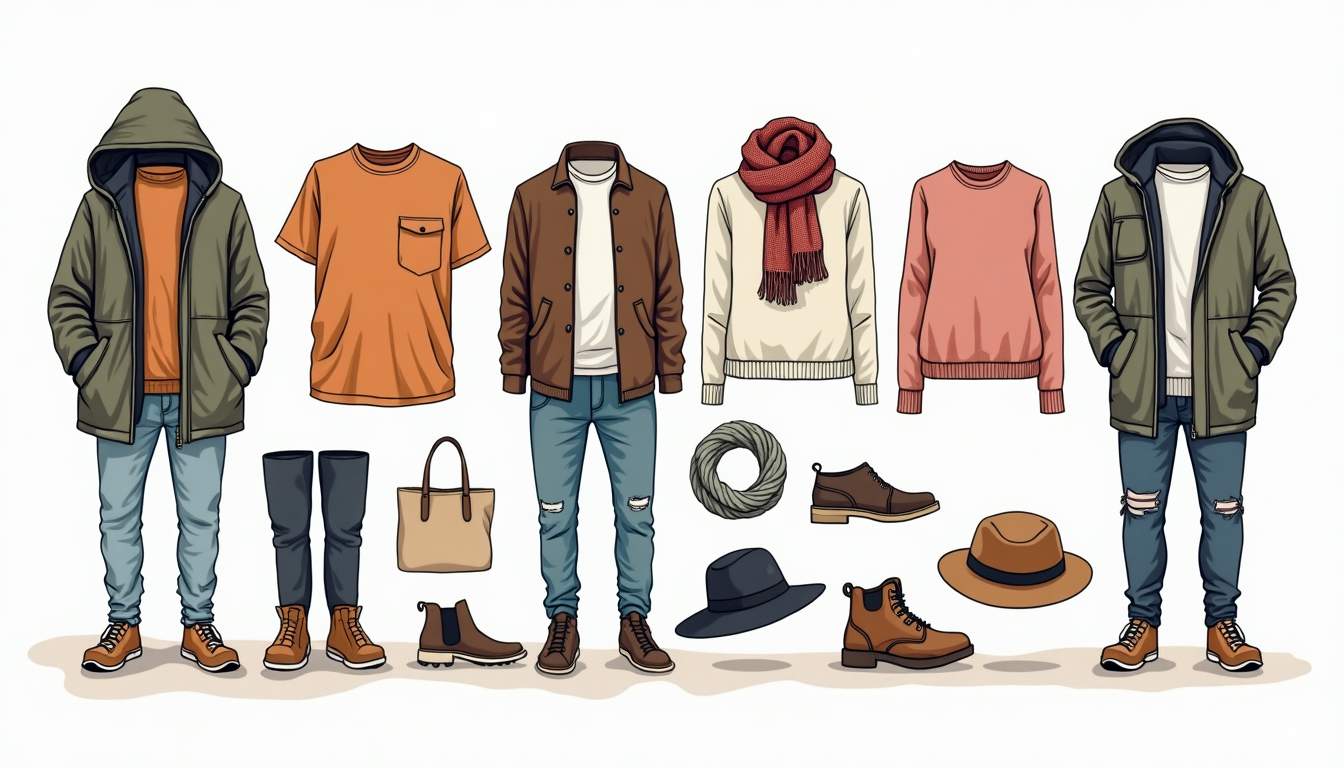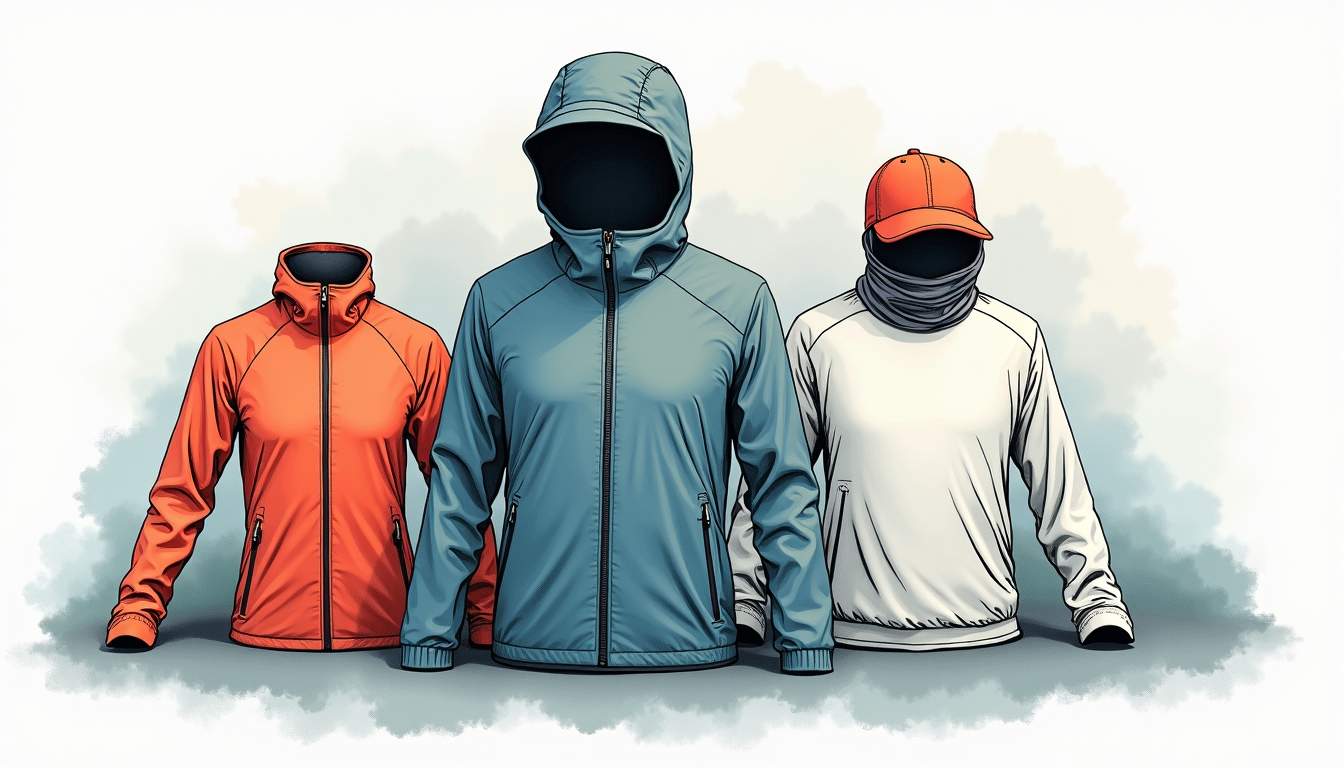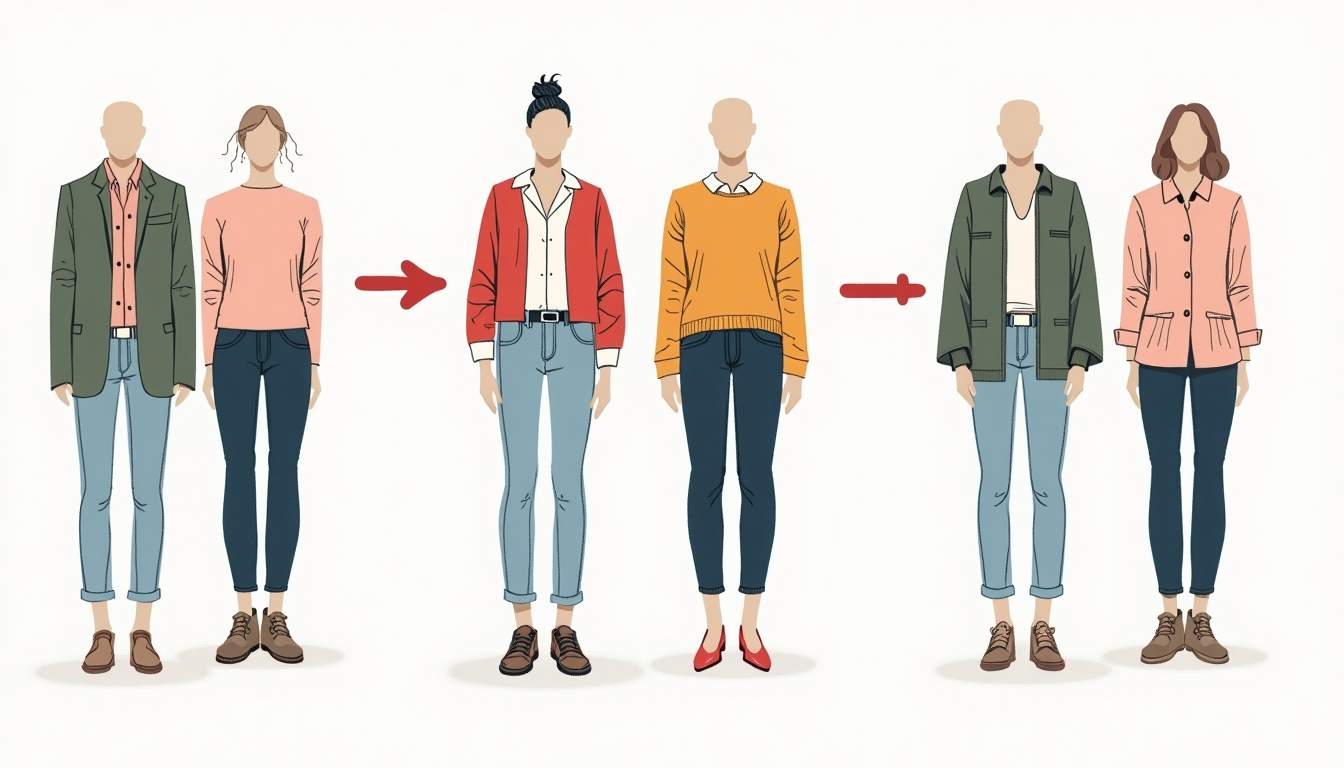
Layering is an essential skill for anyone looking to maximize comfort, style, and functionality in their wardrobe. Whether you’re hitting the trails for a morning run, heading to the office, or just enjoying a casual day out, mastering layering techniques can help you adapt to changing temperatures and activities effortlessly. This guide dives deep into the art of layering for both active and casual wear, offering practical tips and style advice to elevate your everyday outfits.
Understanding the Basics of Layering
Before diving into specific techniques, it’s important to understand what layering really means. At its core, layering involves wearing multiple garments on top of one another to regulate body temperature, manage moisture, and create versatile looks. The key to successful layering lies in choosing the right fabrics and fits for each layer, ensuring comfort and functionality throughout the day. The art of layering can also enhance your style, allowing you to express your personality while remaining practical.

Layering isn’t just about piling on clothes; it’s about strategically combining pieces to serve different purposes. Each layer has a role, from moisture management to insulation and protection from the elements. When done correctly, layering can transform your wardrobe, making it adaptable to various weather conditions and activities. Moreover, layering can help you transition seamlessly from indoor to outdoor environments, as you can easily remove or add layers as needed, ensuring you stay comfortable no matter the setting.
The Three Essential Layers
Most layering systems revolve around three main layers: the base layer, the mid layer, and the outer layer. Understanding the function of each is fundamental to building an effective outfit. Each layer not only serves a practical purpose but can also be an opportunity to showcase your style and creativity.
- Base Layer: This is the layer closest to your skin. Its primary job is moisture management—wicking sweat away to keep you dry and comfortable. Materials like merino wool, synthetic fabrics, and silk blends excel here. Choosing the right base layer can also enhance your overall comfort, as a well-fitted piece will prevent chafing and allow for ease of movement, making it ideal for both active pursuits and casual wear.
- Mid Layer: The mid layer provides insulation. It traps body heat to keep you warm without adding excessive bulk. Fleece, down, and synthetic insulated jackets are common mid-layer choices. This layer can be a great opportunity to play with textures and colors, as it is often visible when you wear a jacket or coat over it. A stylish mid-layer can elevate your outfit while still serving its functional purpose.
- Outer Layer: The outer layer protects you from wind, rain, and snow. It should be weather-resistant or waterproof, breathable, and durable. Think waterproof shells, windbreakers, and softshell jackets. The outer layer not only serves as a barrier against the elements but also acts as the finishing touch to your ensemble, allowing for personal expression through various styles, patterns, and features.
By combining these layers thoughtfully, you can create a system that adjusts to your activity level and the environment, whether you’re jogging in the park or running errands around town. Additionally, layering can be a fun way to experiment with your wardrobe, mixing and matching different textures, colors, and patterns to create unique looks that reflect your personal style. This versatility not only maximizes your clothing options but also encourages sustainable fashion practices by allowing you to make the most of what you already own. For more inspiration and styling tips, visit The Platinum Link.
Layering for Active Wear: Performance Meets Practicality
Active wear layering requires a balance between performance and comfort. When you’re moving, your body generates heat and sweat, so your layers need to manage moisture and temperature efficiently without restricting movement.

Choosing the Right Base Layer
For active wear, the base layer is arguably the most important. It needs to wick moisture away quickly to prevent chafing and keep your skin dry. Synthetic fabrics like polyester and nylon blends are popular because they dry fast and maintain their shape. Merino wool is another excellent option, especially for cooler weather, because it naturally resists odors and regulates temperature.
Look for base layers with a snug fit that moves with your body. Avoid cotton, as it absorbs sweat and holds moisture, which can lead to discomfort and chills during outdoor activities.
Effective Mid Layers for Movement
The mid layer in active wear should provide warmth without bulk. Lightweight fleece jackets or insulated pullovers made from synthetic fibers are ideal. These materials trap heat while allowing sweat to escape, keeping you warm and dry.
Consider mid layers with stretch panels or articulated designs that accommodate a full range of motion. This ensures your layering system supports your activity rather than hindering it.
Outer Layers: Protection Without Overheating
When it comes to outer layers for active wear, breathability and weather resistance are paramount. Look for jackets with waterproof membranes like Gore-Tex or similar technologies that block rain and wind but allow sweat vapor to escape.
Features such as adjustable hoods, ventilation zippers, and adjustable cuffs help regulate temperature on the go. Lightweight, packable shells are perfect for unpredictable weather, allowing you to add or remove layers as conditions change.
Layering for Casual Wear: Style and Comfort Combined
While active wear prioritizes function, casual wear layering offers a chance to express personal style while staying comfortable. The principles of layering remain the same, but the focus shifts slightly towards aesthetics and versatility.
Building a Stylish Base Layer
In casual wear, the base layer can be as simple as a well-fitted t-shirt or a lightweight long-sleeve shirt. Cotton blends, modal, and lightweight knits provide comfort and breathability for everyday wear.
Opt for neutral colors or subtle patterns that can serve as a foundation for more eye-catching layers. A good base layer should fit close to the body but not be restrictive, offering a clean silhouette.
Mid Layers That Add Texture and Warmth
The mid layer is where casual layering shines. Sweaters, cardigans, denim jackets, and lightweight pullovers can add texture, color, and warmth to your outfit. Materials like cotton, wool, and cashmere blends are popular choices that provide comfort and style.
Layering a chunky knit over a slim base layer or pairing a denim jacket with a hoodie creates visual interest and depth. Mixing textures—such as pairing a soft sweater with a rugged jacket—can elevate your look effortlessly.
Outer Layers for Casual Versatility
Casual outer layers range from classic trench coats and parkas to bomber jackets and lightweight windbreakers. These pieces should complement your overall style while providing protection from the elements.
When layering for casual wear, consider proportions and lengths. A longer coat over a shorter jacket or sweater can create a balanced, intentional look. Accessories like scarves and hats also play a role in layering, adding both warmth and personality.
Advanced Layering Tips for Both Active and Casual Wear
Once you’ve mastered the basics, experimenting with advanced layering techniques can take your outfits to the next level. These tips apply whether you’re dressing for a hike or a weekend brunch.
Play with Proportions and Lengths
Mixing different lengths can add dimension to your outfit. For example, wearing a longer base layer under a cropped mid layer or a longer outer layer over a shorter sweater creates a dynamic silhouette. This technique works well in both active and casual settings, helping you look intentional and stylish.
Incorporate Lightweight Layers
Lightweight layers like vests, thin cardigans, or button-up shirts can be added or removed easily as temperatures fluctuate. These pieces are especially useful during transitional seasons like spring and fall when the weather can be unpredictable.
For active wear, lightweight insulated vests provide core warmth without restricting arm movement. In casual wear, a thin cardigan or a chambray shirt layered over a tee adds subtle interest without bulk.
Use Color and Pattern Strategically
Layering offers a great opportunity to experiment with color blocking and patterns. Start with neutral base layers and add pops of color or prints in your mid and outer layers. This approach keeps your outfit cohesive while allowing you to express personality.
For active wear, bright colors and reflective details can also enhance visibility and safety. In casual wear, mixing prints like stripes and florals or pairing solids with textured fabrics can create eye-catching ensembles.
Don’t Forget Accessories
Accessories like scarves, hats, and gloves are functional and stylish additions to your layering system. They add warmth and can be easily removed or added as needed.
In active wear, moisture-wicking headbands and lightweight gloves help regulate temperature during workouts. For casual wear, wool scarves, beanies, and leather gloves can complement your outfit while keeping you cozy.
Common Layering Mistakes to Avoid
Even with the best intentions, it’s easy to fall into common layering pitfalls. Being aware of these can help you refine your approach and enjoy the benefits of layering fully.

Overloading on Layers
Adding too many layers can lead to overheating and discomfort. Instead of piling on bulky pieces, focus on quality and functionality. Choose versatile layers that can be adjusted or removed easily as your activity level or the weather changes.
Ignoring Fabric Choices
Fabric selection is crucial. Avoid cotton for active wear base layers because it traps moisture. Similarly, heavy or non-breathable fabrics in outer layers can cause sweating and discomfort. Invest in technical fabrics designed for performance and comfort.
Neglecting Fit and Mobility
Layers that are too tight restrict movement, while overly loose layers can look sloppy and fail to retain warmth effectively. Aim for a balanced fit that allows freedom of movement without excess bulk.
Conclusion
Layering is a versatile and practical technique that enhances both active and casual wardrobes. By understanding the roles of each layer and choosing the right fabrics and fits, you can create outfits that are comfortable, functional, and stylish.
Whether you’re gearing up for an intense workout or putting together a relaxed weekend look, layering allows you to adapt to changing conditions with ease. Experiment with textures, colors, and proportions to find combinations that suit your lifestyle and personal style. With these layering techniques, you’ll be ready to face any season or activity confidently and comfortably.